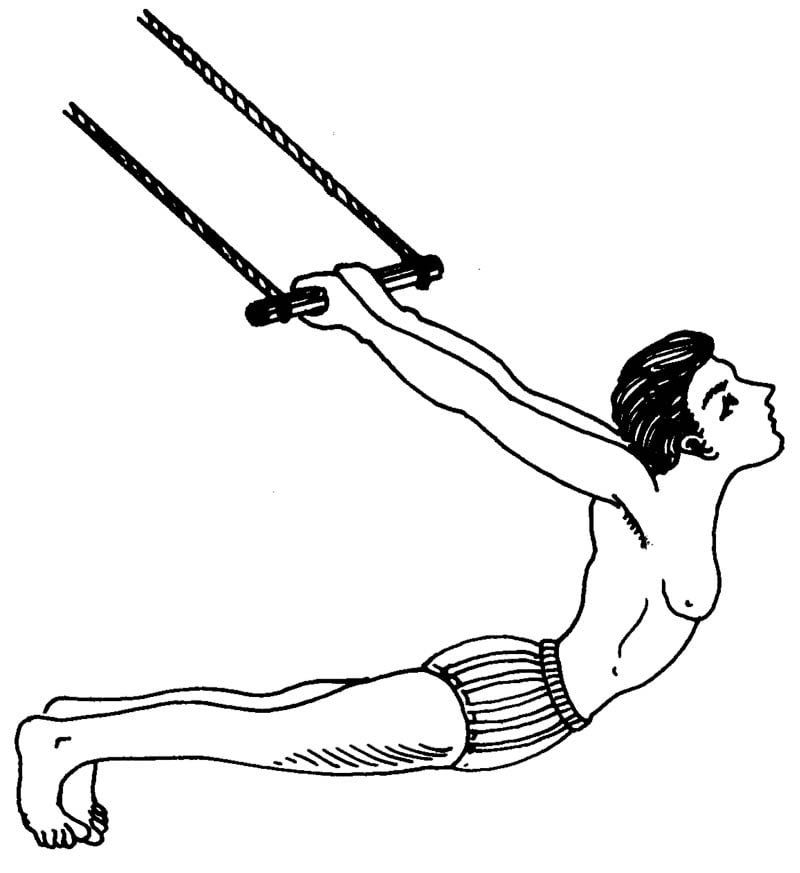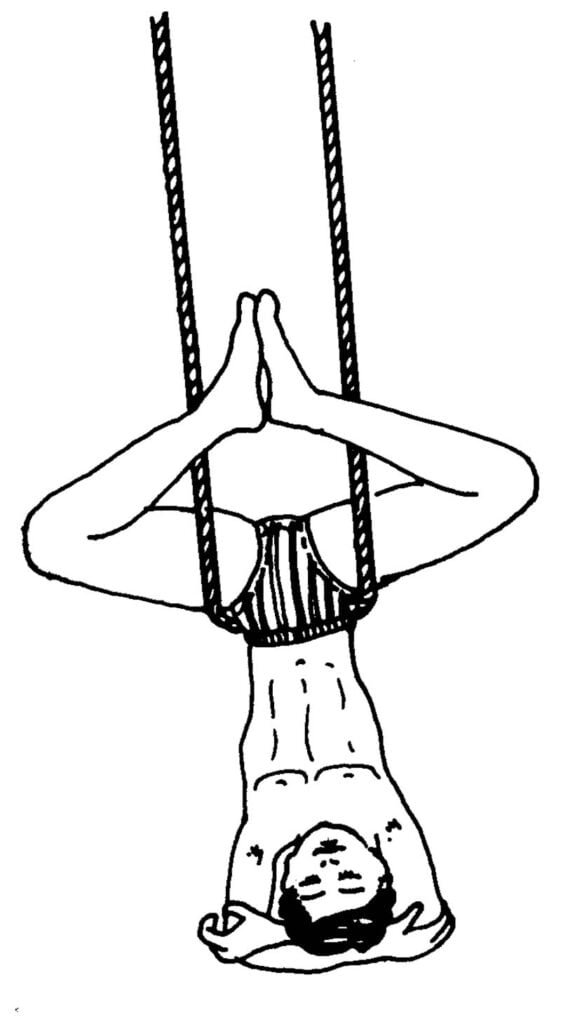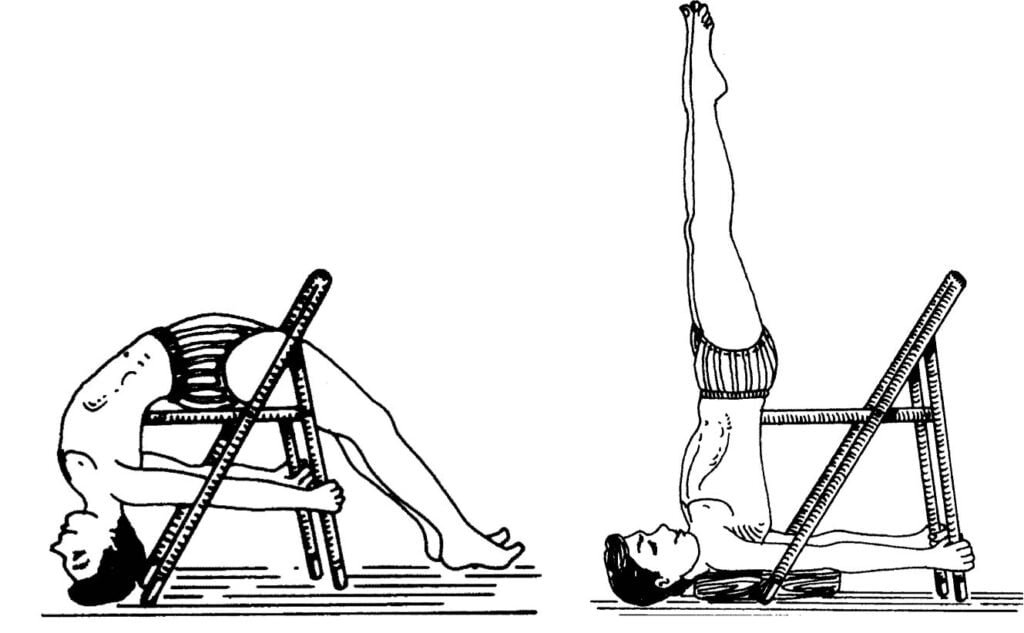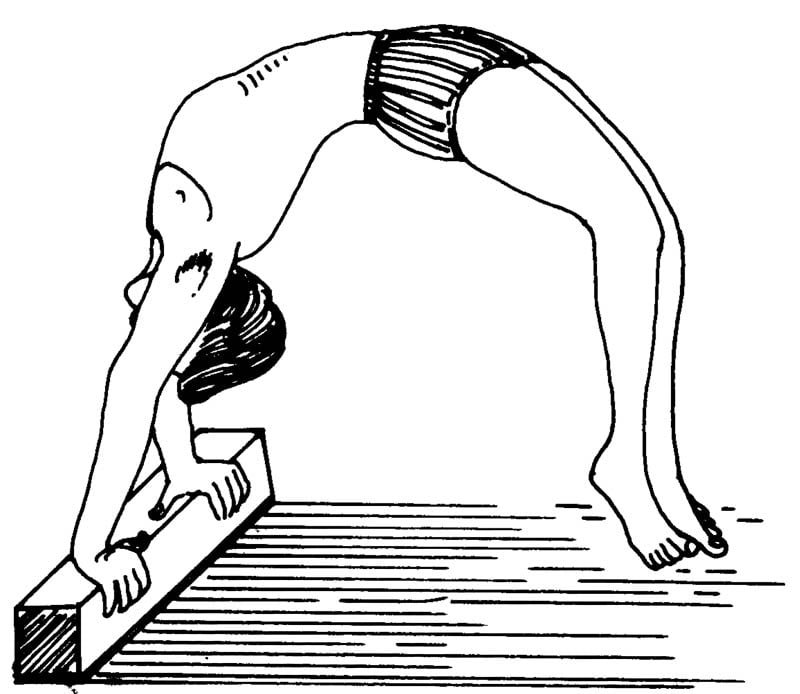Yoga props are supports or aids for learning and teaching Yoga asanas. Yogacharya B.K.S. Iyengar has created numerous yoga props to assist patients in yoga therapy and to help yoga practitioners learn the classical Yoga asanas.
In this chapter we have confined ourselves to using only simple objects from every day life when describing how Yoga Props can be used by children. These will help a child develop strength and flexibility and provide variety in a child’s yogic practice.
The Floor: A line on the floor can be a useful learning and teaching aid. Teach children to stand on a line and align their bodies viz-a-viz the lines while practicing asanas, particularly the Standing Poses. This teaches them the basis of alignment in yoga asanas.
The Wall: Walls can serve as useful props: They provide invaluable support when a child begins learning inverted poses like Shirshasana and Adho Mukh Vriksh asana.
Learning Shirsh Asana against a wall :
1. Place your blanket against a wall preferably in a corner or against an edge where two walls meet.
2. Rest your forearms on the blanket and interlock your fingers. The knuckles must touch the wall.
3. Come into an inverted position. Be sure that you are not tilted to a side.
4. Only the heels should rest against the wall. Broaden and lift your shoulders. Tighten the buttock muscles. Stay a while.
Difficult arm-balancing poses like Baka-asana can also be learned with the help of wall, resting the toes against a wall.
Children can gain confidence and flexibility by practicing Urdhva Dhanur asana using the wall for support.
The wall can also provide resistance where by the pupils can improve their pose as in Adho Mukha Shava asana (Place fingers against a wall)
Wall Ropes: (Traditionally called Yoga Kurunta) A wide range of movements can be performed on wall ropes. These movements create flexion and extension and are very good for developing a growing child’s muscles and promoting growth. Besides strengthening the back and making the spine supple, they also enable the children to perform difficult poses. One could loop ropes around step ladders in a gymnasium or hooks on a wall.

The Ceiling Ropes: Ropes can also be suspended from rafters or from hook in the ceiling.

Children love to hang upside down in Rope Shirsha asana from these ceiling ropes. This stress free version of Shirsha asana is beneficial for all children because the brain and the pineal and pituitary glands are supplied with fresh blood in this position. Even a beginner can stay comfortably in this inverted position.
The Chair: Sarvangasana can be done with the help of chair. Here is the method:

1. Place a bolster or two folded blankets near the front legs of a chair. Then it side ways on the chair.
2. Swing your legs onto the back rest of the chair and hold the sides of the back rest.
3. Gradually lean back till your shoulders rest on the bolster or blankets and rest the back of your head on the floor.
4. Extend you arms backwards within the legs of the chair and hold the back legs of the chair, if possible.
It is easy for a child to stay a while in Sarvang asana performed in this manner. This pose is very effective in removing fatigue and refreshing the child. The inversion leads to healthy blood circulation in the thyroid gland and the brain.
Chairs can also provide useful support to prepare the back for Backward-Bending Poses. Here is the method to perform Viparit Dand-asana on the chair.
1. Insert your legs in the gap between the back rest and the seat of a chair:
2. Hold the back rest, bend your knees and gradually lie back.
3. Insert your arms between the legs of the chair (under the seat) and hold the back legs if possible. Straighten your knees and press your toes and heels to the wall. Look at the floor. Stay up to five minutes in this pose.
4. To come up, hold the back rest of the chair, bend your knees and come up with a swing.
The Bench: Benches can be put to good use to support children in Setu Bandh Sarvanga asana. This resting pose performs wonders to calm the nerves, rest the brain and refresh the child. This pose can be done by girls during menstruation.

Since children find forward bending poses difficult and unappealing, the teacher can make these poses more endurable for children by asking a child to sit on a bench, the heels on the floor and then to bend forward.
A bench can also serve as a support to perform half Hal-asana: rest the toes on a bench.
The Brick: Stiff children can’t do Ardh Chandra asana easily as their palms don’t reach the floor. They tend to get disheartened with such poses. A vertical brick gives them the support they require to learn the pose. Over time the brick can be placed horizontally and when they advance in their practice they can dispense with it.

The Belt: Most children find it difficult to keep their elbows parallel to each other in Sarvanga asana. They tend to spread their elbows too far apart. This leads to a faulty pose where the tail bone projects back and the legs come forward. A belt can be used effectively to keep the elbows in place and so correct this defect.
Some children find it difficult to stay a while in Padma asana or to perform variations like Matsya asana. A belt can be used to bind the knees so that children can learn to perform these poses properly.
Pillows and Bolsters: Pillows and bolsters are especially useful when a child is suffering from some ailment or injury. They can be used to give support to the unwell child in several ways, to provide relief.

Blankets: Beginners have trouble staying in Sarvanga asana for a few minutes. They can be taught to do this in the following manners:
1. Place two or three neatly folded blankets one on top, the other on the floor.
2. Lie on your back with your shoulders resting on the blankets, the neck on the edge and the back of the head on the floor.
3. Then perform Sarvang asana.
When Sarvang asana is done in this manner, children can lift the spine up, open the chest and stay a while in the pose. This is particularly useful for obese children.

